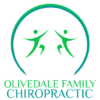
Q. What Is Chiropractic?
A. Chiropractic means ”done by hand”. It is a natural, drug-free health profession with a hands-on approach to health. Chiropractors specialise in the diagnosis, treatment and prevention of mechanical disorders of the musculoskeletal system, as well as the affects of these disorders on the function of the nervous system and on general health.

Q. Is Chiropractic safe?
A: Yes. Chiropractic is widely recognised as one of the safest drug-free, non-invasive therapies available for the treatment of neuromusculoskeletal complaints. Chiropractic has an excellent safety record, however, no health treatment is completely free of potential adverse effects. The risks associated with chiropractic are very small. Many patients feel immediate relief following chiropractic treatment, but some may experience mild soreness, stiffness or aching, just as they do after some forms of exercise.

Q: I can ‘click’ my own back and neck, why should I still see a chiropractor?
A: A chiropractor is well trained in motion palpation techniques (a method of examination in order to find the restricted/’stuck’ vertebral segments). Once the chiropractor has determined where these restrictions are, a high-velocity, low-amplitude thrust will be performed in order to get the segment moving normally again. The chiropractor uses specific techniques which they have mastered over many years (please do not try these maneuvres as they can be dangerous without the correct training and understanding). When you ‘click’ your own back/neck, it is a general motion of the vertebral column that allows the ‘clicking’ sound. The ‘click’ that you produce comes from a segment that is already moving. The more you move these segments, the more unstable these joints will get – leading to further damage and pain.

Q: What conditions do chiropractors treat?
A: Chiropractors care for patients of all ages, with a variety of health conditions. They are especially well known for their expertise in caring for patients with back pain, neck pain and headaches (particularly with their highly skilled manipulations or chiropractic adjustments). They also care for patients with a wide range of injuries and disorders of the musculoskeletal system, involving the muscles, ligaments and joints. These painful conditions often involve or impact the nervous system, which can cause referred pain and dysfunction distant to the region of injury. The benefits of chiropractic care extend to general health issues, as well, since our body structure affects our overall function. Chiropractors also educate their patients on diet, nutrition, exercise, healthy habits, and occupational and lifestyle modification.

Q: What can I expect in my first consultation?
A: In your first consultation, your chiropractor will take a case history and a family and patient history. A physical examination and orthopaedic tests will also be performed in order to have a better understanding of the diagnosis. Once the chiropractor has reached a diagnosis, a relevant treatment protocol will be decided on.

Q: What degree does a chiropractor have?
A: In South Africa, chiropractors can study either at the University of Johannesburg or Durban University of Technology. They obtain their Masters in Technology of Chiropractic. Both these chiropractic programmes at the universities are accredited by the European Council on Chiropractic Education. The course is a 6 year programme with theoretical and practical components. Your chiropractor has spent many years refining their techniques in order to give you the best possible treatments.

Q: What is the ‘clicking’ sound caused by during an adjustment?
A: This sound is known as a ‘cavitation’ or an ‘audible release’. It is caused by the gapping of the joint surfaces and the shifting of gas bubbles within the joint capsules. The cavitation is not an indicator or sign that the joint has moved. If there is no cavitation, the chiropractor can motion palpate again to see if the joint has indeed moved.
